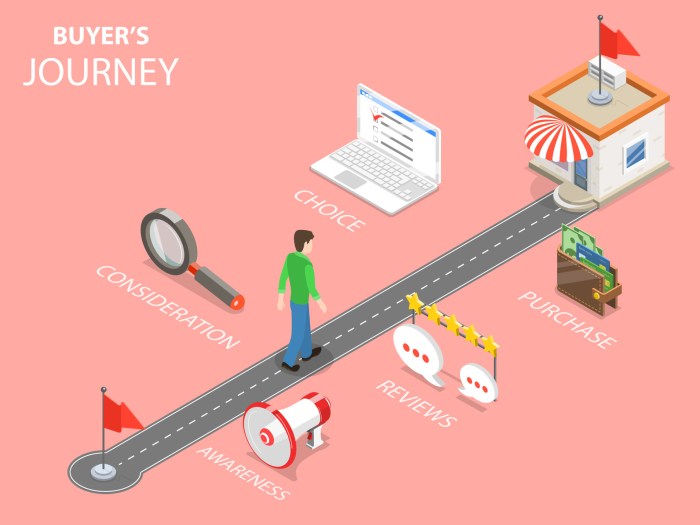![Omnichannel Marketing: Complete eCommerce Guide [2023]](https://hestiio.info/wp-content/uploads/2025/06/omnichanel-marketing.png)
Omnichannel marketing solutions represent a transformative approach in today’s fast-paced digital landscape, where businesses seek to engage customers across multiple touchpoints. By blending various marketing channels—both online and offline—companies can create a cohesive and personalized customer experience that drives engagement and loyalty.
In this exploration, we will delve into the significance of omnichannel strategies, showcase examples of successful campaigns, and discuss the essential tools and technologies that empower businesses to implement these solutions effectively.
Understanding Omnichannel Marketing Solutions
Omnichannel marketing represents a seamless approach to customer experiences across multiple channels and touchpoints. In today’s fast-paced digital landscape, where consumers engage through various platforms, the significance of omnichannel strategies cannot be understated. Businesses aim to create a unified brand experience, ensuring that customers receive consistent messaging whether they interact via social media, email, in-store, or web.The core of omnichannel marketing lies in integrating various communication channels to foster customer engagement, improve satisfaction, and enhance brand loyalty.
This strategy allows brands to tailor their messages based on consumer behavior and preferences, ultimately driving sales and customer retention. A well-implemented omnichannel strategy not only meets customers where they are but also responds to their needs in real time, creating a more personalized shopping experience.
Successful Omnichannel Marketing Campaigns
Numerous brands have effectively executed omnichannel campaigns, illustrating the potential of this strategy. One notable example is Starbucks, which integrates its mobile app, in-store experiences, and social media. The app enables customers to order ahead, collect loyalty points, and receive personalized offers, creating a cohesive journey from mobile to store.Another successful case is Nike, which employs a blend of online and offline channels.
Through its NikePlus membership program, customers enjoy exclusive access to products and personalized experiences, which are consistent across their website, mobile app, and physical stores. This strategy not only enhances customer loyalty but also drives significant revenue growth.
Tools and Technologies for Omnichannel Marketing
Implementing omnichannel marketing solutions requires a mix of tools and technologies that enable businesses to gather and analyze data, manage customer interactions, and execute marketing campaigns effectively. Key technologies include:
Customer Relationship Management (CRM) Systems
These tools help businesses track customer interactions across all channels, providing insights into preferences and behaviors. Salesforce and HubSpot are leading CRM platforms that facilitate seamless data integration.
Marketing Automation Platforms
Tools like Marketo or Mailchimp allow marketers to automate campaigns across various channels, ensuring timely and relevant messaging tailored to individual customer journeys.
Analytics Tools
Utilizing analytics tools like Google Analytics and Adobe Analytics enables businesses to measure campaign performance, understand customer behavior, and adjust strategies in real time.
Social Media Management Tools
Platforms such as Hootsuite and Buffer assist in managing brand presence across multiple social networks, enabling targeted advertising and engagement with audiences.
E-commerce Solutions
Platforms like Shopify and Magento provide businesses the capability to create an online storefront that integrates with physical locations, ensuring a unified shopping experience.These tools collectively empower businesses to create a comprehensive omnichannel marketing strategy, enhancing customer satisfaction and driving growth in an increasingly competitive marketplace.
Market Research in Omnichannel Marketing
Market research is a critical component of effective omnichannel marketing strategies. It helps businesses understand their target audience, identify market trends, and shape their offerings in a way that resonates across various channels. With the rise of digital interactions, being informed about customer preferences and behaviors has never been more crucial.Effective market research informs decision-making and strategy formulation in omnichannel marketing.
It involves a mix of qualitative and quantitative approaches to gather data that can illuminate the customer journey across different platforms. By understanding which channels customers prefer and how they interact with brands, businesses can tailor their marketing efforts to create a seamless experience.
Methods for Conducting Market Research
Utilizing multiple methods for market research provides a comprehensive view of customer behaviors and preferences. Below are some effective methods that can inform omnichannel marketing strategies:
- Surveys and Questionnaires: These tools gather direct feedback from customers, helping businesses understand preferences, satisfaction levels, and expectations.
- Focus Groups: Engaging a small group of target customers in discussions can provide qualitative insights into their thoughts and feelings about the brand and its offerings.
- Social Media Listening: Monitoring social media platforms allows brands to understand customer sentiments and trends in real time. This direct feedback can guide marketing strategies across channels.
- Website and App Analytics: Using tools like Google Analytics offers data on user behavior, helping identify how customers navigate through digital platforms and which channels drive the most engagement.
- Competitor Analysis: Evaluating competitors’ strategies can reveal gaps in the market and opportunities for differentiation in an omnichannel approach.
Incorporating these methods not only provides valuable data but also fosters a deeper connection between the brand and its customers.
Enhancing Customer Understanding with Data Analytics
Data analytics plays a pivotal role in understanding customer behavior across multiple channels. By analyzing large sets of data, businesses can uncover patterns and trends that inform their omnichannel strategies.
“Data-driven insights enable brands to anticipate customer needs and preferences, leading to more effective marketing initiatives.”
Here are some ways data analytics can enhance customer understanding:
- Customer Segmentation: Effective analysis allows brands to categorize their audience into segments, enabling tailored marketing efforts that resonate with specific groups.
- Behavior Tracking: Monitoring customer interactions across channels helps businesses identify their preferences and adjust strategies accordingly. For instance, if data shows high engagement on mobile devices, brands can prioritize mobile-friendly content.
- Predictive Analytics: Utilizing historical data enables businesses to forecast future behaviors, helping to craft proactive campaigns that meet customer expectations.
- Cross-Channel Performance Measurement: Analyzing how customers engage across different channels can highlight what works best and where improvements are needed.
The integration of data analytics into market research can significantly enhance a brand’s capability to deliver personalized, relevant, and timely experiences to customers, ultimately driving satisfaction and loyalty.
Integrating Marketing Software for Omnichannel Success

The integration of marketing software is crucial for achieving success in an omnichannel marketing strategy. As businesses strive to deliver seamless customer experiences across various platforms, the right tools can make a significant difference. By leveraging integrated marketing solutions, companies can streamline their processes, improve data accuracy, and enhance customer interactions across all touchpoints.To effectively support an omnichannel approach, marketing software should encompass a range of functionalities.
These include data synchronization, cross-channel analytics, customer journey mapping, and automated campaign management. A robust integration allows businesses to maintain consistency in messaging and branding, ultimately driving better engagement and conversions.
Key Marketing Software Solutions
Several marketing software solutions are designed specifically to facilitate omnichannel marketing efforts. The following list highlights some of the most popular options available:
- HubSpot: Known for its inbound marketing capabilities, HubSpot offers features like email marketing, CRM integration, social media tools, and marketing automation, all in one platform.
- Salesforce Marketing Cloud: This powerful tool allows businesses to manage customer data, create targeted campaigns, and analyze performance across multiple channels.
- Adobe Experience Cloud: A comprehensive suite of marketing solutions that provides tools for data management, content creation, and personalized customer experiences across various channels.
- Mailchimp: Although primarily known for email marketing, Mailchimp has expanded its services to include landing pages, ad campaigns, and customer segmentation to support omnichannel strategies.
- Marketo: Focused on B2B marketing, Marketo offers advanced automation features, lead management, and analytics, making it easier to coordinate cross-channel marketing efforts.
The integration of these software solutions offers a multitude of functionalities to enhance omnichannel marketing. Essential features include:
- Data Synchronization: Ensures that customer data is consistent across all platforms, allowing for personalized and accurate communications.
- Customer Journey Mapping: Provides insights into the customer’s path, enabling businesses to tailor their marketing strategies effectively.
- Cross-Channel Analytics: Allows marketers to measure performance across different channels, identifying which strategies yield the best results.
- Automated Campaign Management: Streamlines the process of launching campaigns across multiple platforms, saving time and reducing manual errors.
Comparison of Popular Marketing Software Options
To better understand the features available for omnichannel strategies, the following comparison table Artikels key aspects of popular marketing software solutions:
| Software | Data Synchronization | Customer Journey Mapping | Cross-Channel Analytics | Automated Campaign Management |
|---|---|---|---|---|
| HubSpot | Yes | Yes | Yes | Yes |
| Salesforce Marketing Cloud | Yes | Yes | Yes | Yes |
| Adobe Experience Cloud | Yes | Yes | Yes | Yes |
| Mailchimp | Limited | No | Limited | Yes |
| Marketo | Yes | Yes | Yes | Yes |
With the right marketing software in place, businesses can fully realize the potential of their omnichannel marketing strategies. By ensuring that all channels are integrated and that functionalities align with their goals, companies can provide a cohesive and engaging experience for their customers.
The Role of Public Relations in Omnichannel Marketing
Public relations (PR) plays a pivotal role in enhancing the effectiveness of omnichannel marketing strategies. By shaping public perception and fostering relationships between brands and their audiences, PR not only amplifies marketing messages but also creates a cohesive brand narrative across various channels. This integration is vital for delivering a seamless customer experience, which is the cornerstone of successful omnichannel marketing.Incorporating public relations into omnichannel marketing strategies enables brands to create a unified voice and message that resonates with target audiences, regardless of the platform.
The synergy between PR and marketing can enhance brand visibility, build customer loyalty, and ultimately drive sales.
Successful Examples of Omnichannel PR Campaigns
Several brands have effectively utilized omnichannel approaches in their PR campaigns, demonstrating the power of integrated communication strategies. A notable example is Nike’s “Dream Crazy” campaign, which featured high-profile athletes and powerful storytelling across multiple channels, including social media, television, and public events. This campaign not only resonated with consumers but also sparked discussions around social issues, further engaging audiences across diverse platforms.Another example is Coca-Cola’s “Share a Coke” campaign, where personalized bottles were promoted through social media, experiential events, and traditional advertising.
The campaign encouraged consumers to share their experiences online, creating a buzz that spanned both offline and online channels. By linking PR efforts with interactive elements, Coca-Cola effectively enhanced consumer engagement and brand loyalty.
Best Practices for Aligning PR with Omnichannel Marketing Goals
To achieve the best results from integrating PR with omnichannel marketing, certain best practices should be followed:
1. Develop a Unified Brand Message
Ensure that all PR communications align with the overarching marketing strategy and brand voice. This consistency helps reinforce brand identity across all channels.
2. Leverage Data and Insights
Utilize audience insights and analytics to inform both PR and marketing strategies. Understanding customer preferences and behaviors can enhance messaging effectiveness.
3. Engage with Media Across Channels
Build relationships with journalists, influencers, and content creators on various platforms. This multi-channel engagement can amplify reach and effectiveness.
4. Monitor and Adapt
Keep an eye on campaign performance across different channels. Use feedback and metrics to adapt strategies in real-time, ensuring that both PR and marketing efforts are responsive to audience needs.
5. Integrate Communication Tools
Utilize integrated tools that allow for seamless communication and information sharing among the PR and marketing teams. This can enhance collaboration and ensure that all efforts are aligned.By adopting these best practices, brands can effectively leverage the synergy between public relations and omnichannel marketing, creating a more impactful presence in the marketplace.
Telemarketing and Its Place in Omnichannel Strategies
![Omnichannel Marketing: Complete eCommerce Guide [2023] Omnichannel Marketing: Complete eCommerce Guide [2023]](https://hestiio.info/wp-content/uploads/2025/06/omnichanel-marketing.png)
Telemarketing, often viewed as a traditional form of communication, plays a significant role in today’s omnichannel marketing strategies. By integrating telemarketing into a comprehensive marketing approach, businesses can create a seamless experience that engages customers across various platforms. This integration enhances customer interaction, providing personalized experiences that strengthen relationships and drive conversion rates.
Telemarketing can be effectively integrated into an omnichannel marketing approach by aligning communication strategies across all channels. This ensures that the messaging is consistent and reinforces the brand image, regardless of how customers choose to interact. Key techniques for optimizing telemarketing efforts to complement other marketing channels include:
Techniques for Optimizing Telemarketing Efforts
Utilizing telemarketing alongside other marketing channels enhances overall campaign effectiveness. Here are strategic techniques to consider:
1. Data Integration
Combine telemarketing data with customer insights from other channels. Use CRM systems to keep track of customer interactions, preferences, and previous communications. This allows telemarketers to tailor their pitches based on the customer’s journey across different platforms.
2. Follow-up Strategies
Use telemarketing to follow up on leads generated from digital channels. For instance, after a customer fills out a form on a website, a telemarketer can reach out to provide additional information or answer questions, creating a personal touch that can increase engagement.
3. Cross-Channel Promotions
Promote telemarketing efforts through social media and email campaigns. For example, sending out a promotional email encouraging customers to call for exclusive offers can increase response rates and enhance the overall customer experience.
4. Training for Telemarketers
Equip telemarketers with knowledge about other channels. Understanding how customers interact with the brand via social media, email, or in-store visits enables them to engage in more meaningful conversations, leading to higher conversion rates.
“Effective telemarketing requires a cohesive strategy that aligns with all other marketing efforts, ensuring a seamless customer experience.”
Case studies of businesses successfully utilizing telemarketing within an omnichannel framework showcase its effectiveness. One notable example is a leading retail company that integrated telemarketing with their email marketing efforts. They noticed a significant uptick in customer engagement when telemarketers called customers who had shown interest in a new product line via email. By addressing inquiries and offering personalized recommendations, they saw a 25% increase in conversion rates from these interactions.
Another case is a financial services firm that combined telemarketing with digital advertising campaigns. By tracking responses to ads and following up with targeted calls, they significantly improved their lead nurturing process. The synergy between the digital and telemarketing strategies led to a 30% increase in appointments scheduled with potential clients.
In conclusion, the integration of telemarketing into an omnichannel marketing strategy not only enhances customer interaction but also boosts overall marketing effectiveness. By employing data-driven techniques and learning from successful case studies, businesses can leverage telemarketing as a powerful tool within their broader marketing framework.
Last Recap
In conclusion, embracing omnichannel marketing solutions is not just a trend; it’s a necessity for businesses aiming to thrive in a competitive environment. By integrating diverse channels and leveraging insights from market research and analytics, companies can enhance their customer interactions and drive success.
FAQ Resource
What is omnichannel marketing?
Omnichannel marketing is a strategy that integrates multiple channels to provide a seamless customer experience, regardless of where or how customers interact with the brand.
How does market research impact omnichannel strategies?
Market research helps businesses understand customer preferences and behaviors, allowing them to tailor their omnichannel strategies for maximum effectiveness.
What are some tools used for omnichannel marketing?
Tools include CRM systems, marketing automation software, data analytics platforms, and customer experience management tools that help integrate and streamline marketing efforts.
Can small businesses implement omnichannel marketing?
Yes, small businesses can implement omnichannel marketing by utilizing cost-effective tools and focusing on key channels that align with their target audience.
How important is telemarketing in omnichannel marketing?
Telemarketing can be a valuable component by providing direct communication with customers, enhancing the overall customer experience when integrated with other channels.





